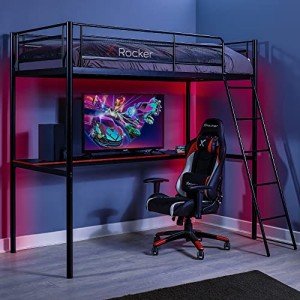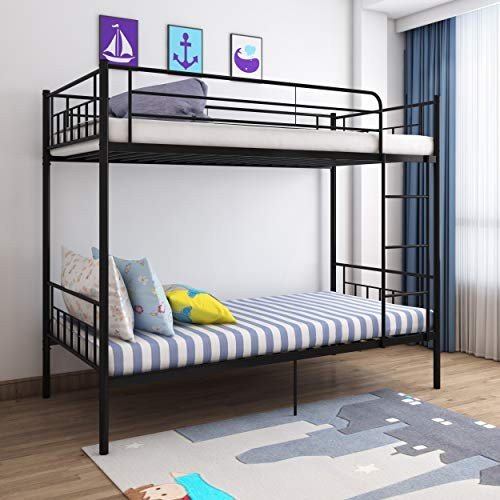The Ultimate Guide to Bunk Beds for Children: Safety, Styles, and Benefits
When it comes to styling a kid's room, moms and dads frequently deal with the dual difficulty of taking full advantage of space while making sure convenience and performance. Bunk beds have emerged as a popular solution that addresses these requirements, using not just sleeping arrangements however also adding to a room's visual. In this thorough guide, we will look into various elements of children's bunk beds, focusing on their benefits, security functions, styles, and considerations for moms and dads considering this purchase.
Tabulation
- Benefits of Bunk Beds
- Security Features to Consider
- Types of Bunk Beds
- Design and Style Options
- Upkeep Tips
- Often Asked Questions (FAQs)
1. Advantages of Bunk Beds
Bunk beds use various advantages for children and their moms and dads. Here are some key benefits:
Space-Efficiency: Bunk beds are an excellent solution for smaller sized spaces. By stacking one bed on top of another, more floor space is available for play, storage, or study locations.
Economical: When kids share spaces, bunk beds can minimize the requirement for buying 2 separate beds, hence saving cash.
Cultivates Social Interaction: Bunk beds can help siblings or friends bond by sharing a space, creating chances for social advancement.
Enjoyable Factor: The principle of sleeping "up high" includes a playful aspect to bedtime, making the transition to sleeping alone simpler for some kids.
Versatile Design: Bunk Beds Children's (Www.Elizabethpotter.Top) beds can be found in numerous designs, colors, and designs to match any space theme, permitting customization that reflects the kid's personality.
2. Security Features to Consider
Security is vital when it comes to children's furnishings, particularly when it comes to bunk beds. Here are some important safety features to evaluate:
| Safety Feature | Description |
|---|---|
| Tough Construction | Frames made from solid wood or metal are chosen. |
| Guardrails | Ought to be at least 5 inches high and extend along both sides of the upper bunk. |
| Ladder Design | Guarantee ladders are firmly attached and have non-slip steps. |
| Mattress Size & & Fit | Should fit comfortably within the frame to avoid spaces. |
| Weight Limit | Always adhere to the manufacturer's weight limitation suggestions. |
3. Kinds Of Bunk Beds
Bunk beds are available in numerous designs, dealing with different needs, preferences, and room sizes. Here are some common types:
Standard Bunk Bed: The the majority of fundamental type, with one bed on top of another.
Loft Bed: Features a high upper bed with space below for a desk or play area.
Futon Bunk Bed: Combines a top bunk with a futon on the bottom, supplying flexibility for seating and sleeping.
L-Shaped Bunk Bed: This design has the top bunk set at a perpendicular angle to the bottom, producing a small corner area.
Triple Bunk Bed: Accommodates three kids utilizing stacked beds, ideal for big families or slumber parties.
4. Style and Style Options
When it comes to picking a style for kids's bunk beds, the alternatives are virtually endless. Here are some popular designs:
Traditional Style: Often made of wood, these bunk beds include elaborate details and are best for timeless or rustic-themed spaces.
Modern Style: Characterized by tidy lines and minimalist designs, contemporary bunk beds can be made from metal or wood.
Themed Bunk Beds: Some brand names provide bunk beds formed like castles, vehicles, or play houses, making bedtime less of a chore.
Convertible Bunk Beds: These can be separated into 2 private beds, offering flexibility as kids grow.
Colorful Options: Bunk beds in dynamic colors can add a sense of happiness and playfulness to any space.
5. Upkeep Tips
Maintaining a bunk bed is vital for durability and security. Here are some pointers:
Regular Inspections: Check for loose screws or bolts every few months and tighten them as needed.
Cleaning: Wipe down frames routinely to avoid dust build-up; consider using a vacuum for hard-to-reach areas.
Bed mattress Care: Rotate bed mattress routinely and use protective covers to prolong their life.
Expect Wear and Tear: Look for any signs of damage in the wood or metal and think about changing parts if required.
Teach Kids Safety Rules: Encourage children to utilize ladders appropriately and ensure they comprehend the security features of their bed.
6. Regularly Asked Questions (FAQs)
Q1: What age is proper for sleeping in a leading bunk?
A1: Typically, children aged 6 and older are suggested for upper bunk sleeping, as they have the necessary motor abilities to climb safely.
Q2: Do bunk beds feature a mattress?
A2: Most bunk beds are sold as frames just, so you will need to purchase mattresses independently. Guarantee that the mattress fits the frame snugly.
Q3: Can bunk beds be separated later?
A3: Many designs allow conversion into 2 private beds, offering versatility for future needs.
Q4: How can I guarantee my kid's security on a bunk bed?
A4: Comply with safety requirements and ensure guardrails, a tough frame, and a secured ladder are in place.
Q5: Are there weight limits on bunk beds?
A5: Yes, constantly examine the maker's specifications concerning weight limits to guarantee security.

Bunk beds for kids can serve multiple functions while making sure security and design. With varied designs and designs offered on the marketplace, parents can discover an unit that not only takes full advantage of bed room space but also reflects their kid's unique tastes. Just like any furniture, comprehending security functions, upkeep, and how they fit into a kid's lifestyle will guarantee that these beds stay a practical furniture option for several years to come.
Through careful factor to consider and adherence to security standards, bunk beds can provide a lasting, enjoyable, and practical sleeping option that kids enjoy.









